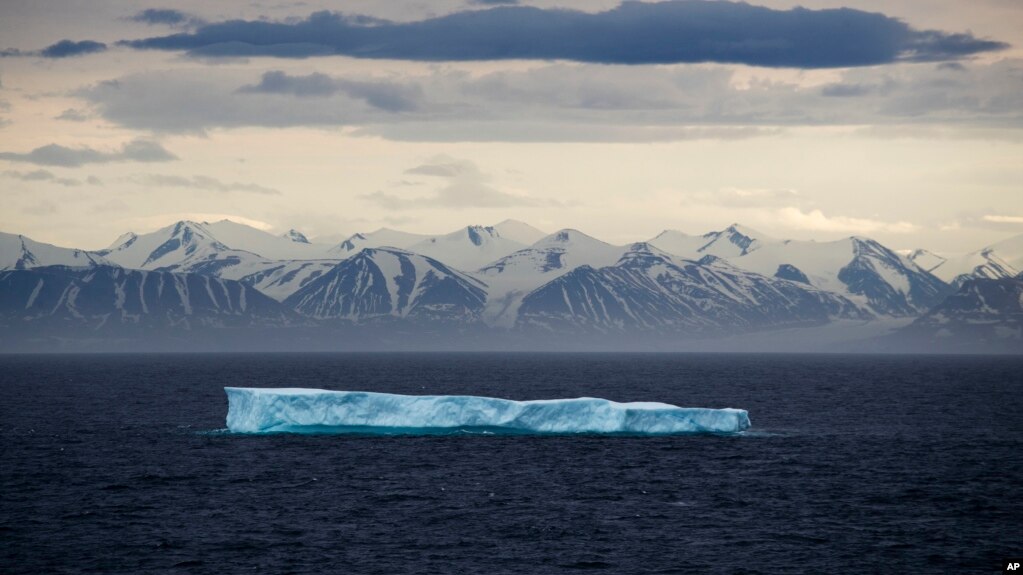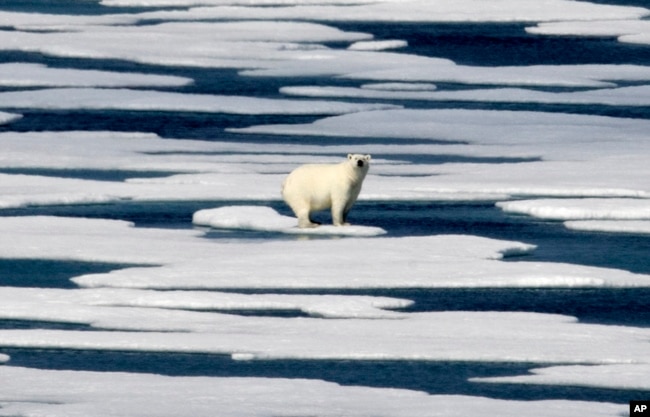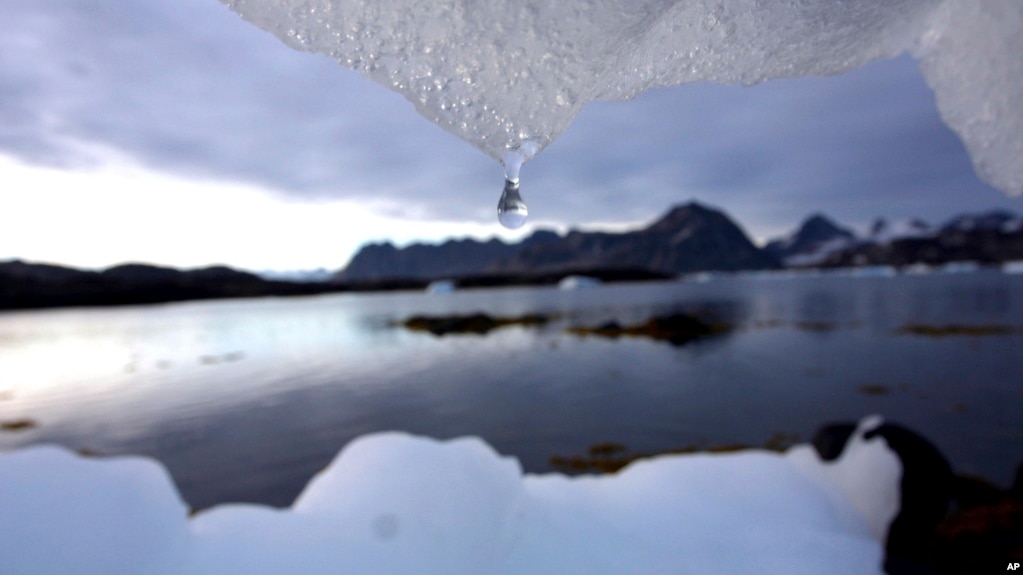Old Rocks
Diamond Member
Jennifer Francis first gave a lecture on this in 2012. Much progress has been made since then.
Follow along with the video below to see how to install our site as a web app on your home screen.

Note: This feature currently requires accessing the site using the built-in Safari browser.
Jennifer Francis first gave a lecture on this in 2012. Much progress has been made since then.

While 2017 may only emerge as the third warmest year on record, scientists predict it will beat out the competition for warmest year without a warming El Nino. These record setting years concern those who see this as a sure sign that climate change is happening at a quickened pace. The WMO says the overall long-term warming trend since the late 1970s is worrying and cannot be ignored. The United Nations agency says rising temperatures are ushering in more extreme weather with huge socioeconomic impact.

An iceberg floats past Bylot Island in the Canadian Arctic Archipelago
WMO spokeswoman Claire Nullis says the warming conditions prevailing over both the Arctic and the Antarctic are very alarming. She says the Arctic is warming at about twice the rate of the global temperature increase. “We are very, very concerned about the rate of warming in the Arctic," she said. "There was an Arctic Report Card released last week. It said while 2017 saw fewer records shattered than in 2016, the Arctic shows no sign of returning to the reliably frozen region it was decades ago.”

A polar bear stands on the ice in the Franklin Strait in the Canadian Arctic Archipelago
The Arctic Report Card is a peer-reviewed report that brings together the work of 85 scientists from 12 nations. WMO notes warmer than average temperatures dominated across much of the world’s land and ocean surfaces during November. It says the most notable temperature rises were across the Northern Hemisphere. For example, it reports temperatures in northern Canada and northwestern Alaska were two degrees centigrade above the average, indicating a very pronounced warming at the Arctic.
World Meteorological Org.: Arctic Warming Appears Irreversible
The annual report released Tuesday by the National Oceanic and Atmospheric Administration showed slightly less warming in many measurements than a record hot 2016. But scientists remain concerned because the far northern region is warming twice as fast as the rest of the globe and has reached a level of warming that's unprecedented in modern times. "2017 continued to show us we are on this deepening trend where the Arctic is a very different place than it was even a decade ago," said Jeremy Mathis, head of NOAA's Arctic research program and co-author of the 93-page report. Findings were discussed at the American Geophysical Union meeting in New Orleans. "What happens in the Arctic doesn't stay in the Arctic; it affects the rest of the planet," said acting NOAA chief Timothy Gallaudet. "The Arctic has huge influence on the world at large."
Permafrost is the permanently frozen layer below the Earth's surface in frigid areas. Records show the frozen ground that many buildings, roads and pipelines are built on reached record warm temperatures last year nearing and sometimes exceeding the thawing point. That could make them vulnerable when the ground melts and shifts, the report said. Unlike other readings, permafrost data tend to lag a year. Preliminary reports from the U.S. and Canada in 2017 showed permafrost temperatures are "again the warmest for all sites" measured in North America, said study co-author Vladimir Romanovsky, a professor at the University of Alaska in Fairbanks. Arctic sea ice usually shrinks in September and this year it was only the eighth lowest on record for the melting season. But scientists said they were most concerned about what happens in the winter — especially March — when sea ice is supposed to be building to its highest levels.

An iceberg melts in Kulusuk, Greenland near the arctic circle. A new report finds permafrost in the Arctic is thawing faster than ever before.
Arctic winter sea ice maximum levels in 2017 were the smallest they've ever been for the season when ice normally grows. It was the third straight year of record low winter sea ice recovery. Records go back to 1979. About 79 percent of the Arctic sea ice is thin and only a year old. In 1985, 45 percent of the sea ice in the Arctic was thick, older ice, said NOAA Arctic scientist Emily Osborne. New research looking into the Arctic's past using ice cores, fossils, corals and shells as stand-ins for temperature measurements show that Arctic ocean temperatures are rising and sea ice levels are falling at rates not seen in the 1,500 years. And those dramatic changes coincide with the large increase in carbon dioxide levels in the air from the burning of oil, gas and coal, the report said.
This isn't just a concern for the few people who live north of the Arctic Circle. Changes in the Arctic can alter fish supply. And more ice-free Arctic summers can lead to countries competing to exploit new areas for resources. Research also shows changes in Arctic sea ice and temperature can alter the jet stream, which is a major factor in U.S. weather. This is probably partly responsible for the current unusual weather in the United States that brought destructive wildfires to California and a sharp cold snap to the South and East, according to NOAA scientist James Overland and private meteorologist expert Judah Cohen. "The Arctic has traditionally been the refrigerator to the planet, but the door of the refrigerator has been left open," Mathis said. Outside scientists praised the report card. "Overall, the new data fit with the long-term trends, showing the clear evidence of warming causing major changes," in the Arctic, said Pennsylvania State University ice scientist Richard Alley.
Arctic Report Card: Permafrost Thawing Faster Than Before